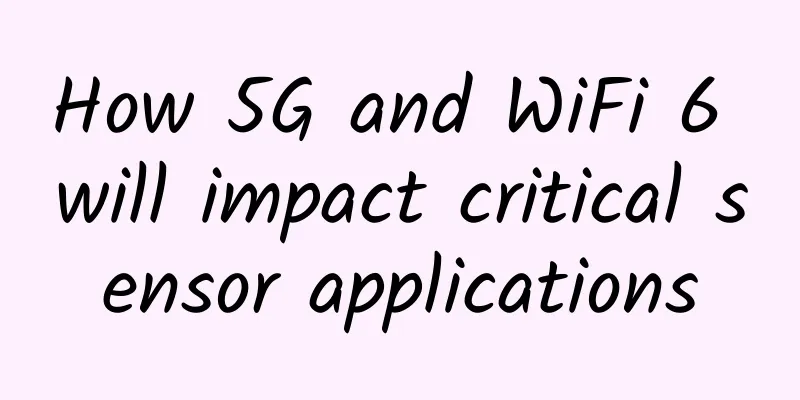Building a smarter world with 5.5G

Realizing the Return of 5G5G is being adopted much faster than 4G, providing faster download speeds and greater connection reliability. It is in the business sector that the large-scale deployment of 5G around the world is transforming the industry. Without the low latency and high bandwidth provided by fifth-generation technologies, factory automation and the use of artificial intelligence and digital twins would not be possible. These innovative applications also increase operators’ revenue and help them achieve business success. Network operators have high capital expenditures on 5G infrastructure and are looking for ways to increase average revenue per user (ARPU) to achieve a return on investment. 5.5G is the evolution of 5G, which will protect operators' investments while expanding business boundaries and enhancing commercial value based on 5G capabilities. 5.5G is the essential upgrade of 5G5.5G's network capabilities are 10 times higher than 5G, with downlink rates increasing from 1Gbps to 10Gbps and uplink rates increasing from 100Mbps to 1Gbps. These attributes will become a driver of revenue for network operators, as 5.5G will significantly improve user experience and network capabilities. Multi-dimensional and guaranteed user experience is becoming more and more important to consumers. Cloud-based 3D videos and games, glasses-free 3D calls, holographic conferences, and XR experiences will bring users multi-sensory and realistic immersive experiences, which require up to 10 Gbps and deterministic latency. 3D Technology3D technology, especially naked-eye 3D technology, has made remarkable progress in recent years. With the development of optical technology, dynamic eye tracking and artificial intelligence, naked-eye 3D tablets have been launched, which will bring a realistic experience. There are two major advances driving this technological shift. First, generating content is much easier than before. For example, a 2D live video can be easily converted to a 3D live video with a delay of only 5 seconds, and as AIGC continues to improve, more 3D content can be generated quickly. Secondly, devices supporting this technology are expected to retail for only $100 more than standard devices, making naked-eye 3D terminals accessible. With the support of content and devices, we believe that naked-eye 3D products will provide a realistic experience and revolutionize the industry in the near future. Current 3D games require a download speed of 100Mbit/s. Considering the required resolution and frames per second, if we move to real-time 3D interaction in the future, the network's peak rate will need to exceed 1Gbit/s. These download speeds are all due to the innovative technical capabilities of 5G and 5.5G, such as low latency, fast uplink speeds, and high positioning accuracy. Digital transformation of industriesIn the industrial sector, digitalization has entered the fast lane. Artificial intelligence will be fully integrated into the production process of enterprises, and the market size of 5.5G Internet of Things will grow rapidly. Our statistics show that more than 10,000 companies in various industries have used 5G. However, many industries now have more challenging requirements. The collaboration between robots and humans in complex scenarios will place higher demands on the next-generation industrial field networks. Some manufacturing control scenarios will require the network to provide 4ms latency and 99.9999% reliability. These new changes will place higher demands on the network, which requires stronger capabilities to better support and serve the digital transformation of the industry. Passive IoTAs a low-cost IoT technology, passive IoT can achieve hundreds of billions of connections. Field tests have shown that its coverage distance can reach more than 200m, which is more than 10 times longer than RFID. 5.5G provides a deterministic experience and supports passive IoT and sensing on top of traditional communication functions. In the past, the Internet of Things has made significant progress, but due to the terminal cost problem, it has not formed a scale. These passive IoT technologies can make sensor networks more economically viable while significantly improving the efficiency of warehouse inventory and other industrial processes. For example, the solution can be used to count 100,000 inventory items in a warehouse with 99.99% accuracy. For example, in the future, passive IoT will be widely used in oil and gas and ports, as tags will be able to measure key data for predictive maintenance such as temperature, humidity and pressure. In many scenarios, batteries cannot be used in acquisition terminals because they are too flammable. However, passive IoT solutions can be used to collect environmental information and basic data required for predictive maintenance. Passive IoT technology is expected to create more business opportunities in scenarios such as warehouse inventory, logistics tracking, and environmental monitoring. 6GHz spectrumAll businesses and changes have placed higher demands on the network. Sufficient spectrum is necessary to achieve sustainable growth of services in the 5.5G era and beyond. Of these spectrums, the upper 6GHz (U6GHz) has the largest bandwidth, with ultra-large bandwidth, and 6GHz has achieved 10Gbps downlink and 1Gbps uplink. Thanks to technological innovations achieved through ultra-large antenna arrays (ELAA), the coverage of 6GH has been expanded to match the C-band. For ubiquitous coverage, mid- and low-frequency spectrum is critical and necessary, for example, FDD and C-band cannot support the evolution to 10Gbit/s. Therefore, 6GHz is a key resource for operators, especially considering future-oriented evolution. According to a recent report by GSMA, 6GHz will be commercially ready for large-scale deployment around 2026. 2023 will be a critical year for 5.5G. Progress in standards, spectrum, industry chain, ecology, and applications is faster than expected. The 5.5G standard will be delivered in 3GPP Releases 18, 19, and 20. Release 18 will be frozen in the first half of 2024. By 2030, all these new changes will bring ten or even a hundred times more new opportunities to the industry. |
<<: Want to save power on your 5G phone? Wake it up first!
>>: Huawei's Meng Wanzhou: 5.5G is the inevitable path for 5G network evolution
Recommend
The demand for optical fiber and cable market is higher than expected, and my country will usher in a traffic economy
At present, my country accounts for the largest s...
AlexHost: Moldova unlimited VPS from 11.88 EUR/year
I received a message from AlexHost, a foreign hos...
MWC19 Shanghai | Data center 400G solution, AI empowers the future
In recent years, with the rapid growth of mobile ...
In the next generation technological revolution, the Internet of Things, who will play the role of “vanguard”?
The Internet of Things (IoT) is widely regarded b...
LuxVPS: €3/month KVM-4GB/30GB/1TB/Germany data center
The LuxVPS domain name was registered in June 202...
Huawei holds AI Summit for Teachers from 100 Universities to Accelerate AI Talent Development in Colleges and Universities
[51CTO.com original article] [Beijing, China, Dec...
Hosteons: Free upgrade to 10Gbps ports in Los Angeles/New York/Dallas, KVM annual payment starts at $21
In January this year, Hosteons began to provide 1...
HostYun offers 10% off on all items, with monthly payments starting from 13.5 yuan for Korean VPS and 22.5 yuan for Tokyo IIJ lines
HostYun is a VPS hosting brand founded in 2008. I...
DiyVM: Hong Kong CN2 & Japan & US VPS, KVM architecture, 2G memory starting from 50 yuan/month
DiyVM is a Chinese hosting company founded in 200...
Different price 5G packages, different network speeds! It turns out that 5G also has different levels?
Using the same 5G network, some users can watch h...
5G is here. How to build the emerging edge DCs?
[[285118]] What does the data center and computer...
The 5G vision has not yet been fully realized, but 6G is coming?
◎ Science and Technology Daily reporter Liu Yan O...
Authoritative interpretation from the Ministry of Industry and Information Technology: What exactly is "5G+Industrial Internet"?
[[415906]] Recently, the Information and Communic...
DesiVPS: 10Gbps bandwidth VPS starts at $17 per year, 1Gbps unlimited traffic VPS starts at $19 per year, San Jose data center
DesiVPS recently sent some promotional packages, ...
Microsoft redesigns the calling interface in Teams
[[356857]] Microsoft Corp. has reportedly begun r...
![[Black Friday] HostDare: $9.89/year-768MB/15G NVMe/1TB/Los Angeles Data Center](/upload/images/67cabcf183290.webp)








